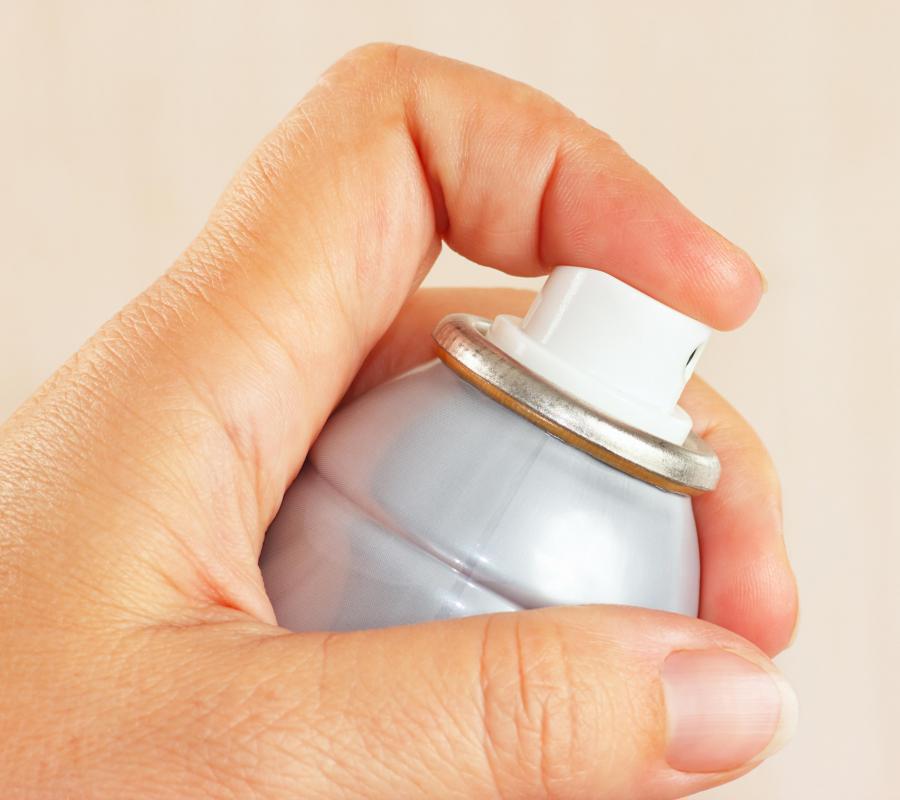At WiseGEEK, we're committed to delivering accurate, trustworthy information. Our expert-authored content is rigorously fact-checked and sourced from credible authorities. Discover how we uphold the highest standards in providing you with reliable knowledge.
What Is Ozone Concentration?
Ozone is a blue-colored toxic gas composed of three oxygen molecules (O3), which can be either a health hazard or beneficial to life on Earth depending on where it is observed in the atmosphere. At lower levels in the atmosphere, ozone concentration above minimal amounts can cause health effects, affect plant growth, and cause air pollution and building damage. In the upper atmosphere 10-20 miles (20-30 kilometers) above ground, ozone acts as a shield to prevent some harmful ultraviolet rays from the sun reaching the ground.
Low-level ozone is formed from reactions of petroleum-powered vehicles with volatile organic compounds (VOCs) found in gasoline and paint solvents. As the compounds build up in the atmosphere, they react with normal oxygen molecules (O2) and create ozone and other compounds contributing to smog or air pollution. Ozone is chemically active, and when breathed in can react with lung tissues and cause damage. It is also corrosive and can cause building damage due to reactions with exterior building products.

Ozone in small concentrations can be beneficial in controlled uses, because it can act as a disinfectant to remove germs. Ozone generators can be used for water treatment facilities and in some air purification systems for germ removal. This is deliberately kept in low concentrations to minimize potential negative health effects. An example of ozone as an air purifier occurs when lightning is generated in thunderstorms, and the air smells fresher afterward. The high electrical energy in lightning can create ozone from oxygen molecules, which will react with air pollution and temporarily clean the air.

In the upper atmosphere, ozone is formed naturally by reactions of oxygen molecules with high-intensity sunlight. The ozone is a very good absorber of ultraviolet-B (UVB) wavelengths of radiation, known to promote cancer in humans and many animals. Ozone is constantly reacting with other particles and then is regenerated during the day, maintaining a constant ozone concentration. The amount is very small, measured at a few parts per billion parts of air, but important for UVB protection.

Chlorofluorocarbons (CFCs) were invented in the 1930s as a group of products needed to replace hazardous refrigerants such as ammonia and methyl chloride, which were either flammable or toxic. Tests with CFCs showed that humans and animals could be safely exposed to leaks of smaller amounts found in homes and smaller businesses without risk. Within a short period, CFCs were widely used around the world in refrigeration, aerosol spray cans, and fire extinguishing agents.

Research beginning in the 1960s showed that in some parts of the Earth's upper atmosphere, ozone concentration was dropping. By the 1980s, there was a clear relationship between ozone layer losses and CFCs released to the air reaching the upper atmosphere. Scientists proposed that the extremely stable CFC molecules remained in the Earth's atmosphere for many years, and eventually air currents and weather allowed them to reach the atmospheric heights where ozone concentration was highest.
The same sunlight energy that created ozone was also strong enough to break apart the CFC molecules, releasing molecules of chlorine (Cl). These molecules, along with dust and high-altitude ice crystals, formed reaction sites that broke apart ozone and created normal oxygen molecules. Although these reactions occurred everywhere in the atmosphere, very low temperatures and weather conditions found over the South Pole caused a higher reaction rate there.
Satellite data showed a very low ozone concentration over the South Pole in the very early polar spring, after several months of darkness. Scientists and the media coined the term “ozone hole” at the time to explain the effect. Although the ozone hole was temporary each spring, and disappeared relatively quickly, it raised great concern over the long-term effect of CFCs.
In 1987, nearly 200 countries belonging to the United Nations signed the Montreal Protocol, and agreed to phase-out or stop production of CFCs by specific deadline years. Changes were made to the agreement over the following decades as new evidence showed higher ozone depletion than originally thought. CFCs were replaced by compounds with little or no chlorine in their molecules, called hydrochlorofluorocarbons (HCFCs) and hydrofluorocarbons (HFCs).
Interest developed in the use of flammable gases like propane and even ammonia for some applications, because these products do not cause ozone depletion. In the early 21st century, manufacturers were looking for ways to incorporate flammable gases safely into consumer products. Research also was expanded to include non-flammable gases such as carbon dioxide and other technologies that could cool food without the use of refrigerant gases.
AS FEATURED ON:
AS FEATURED ON:














Discuss this Article
Post your comments